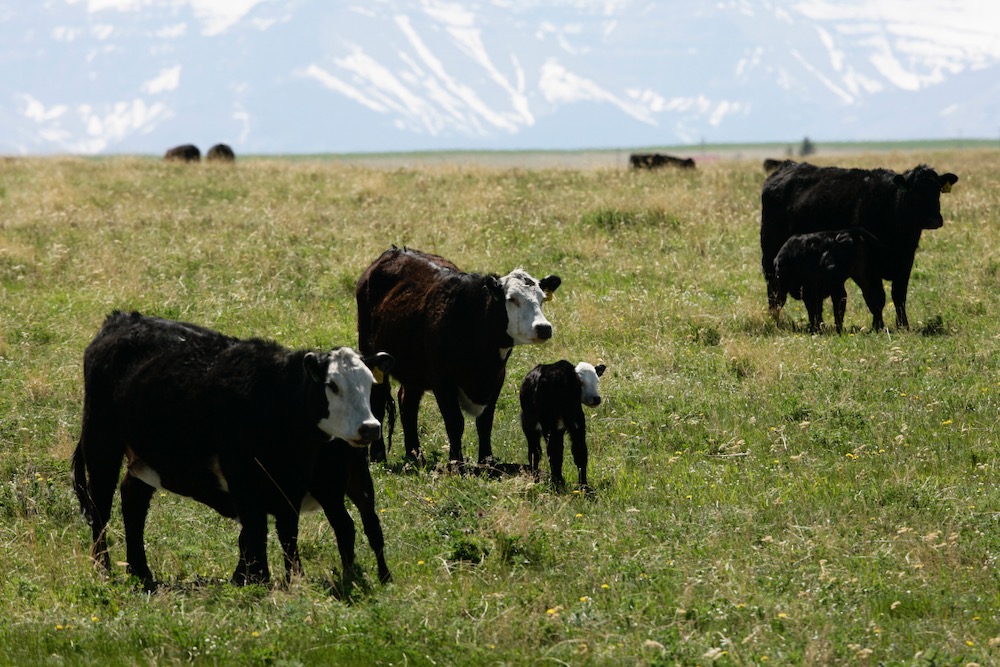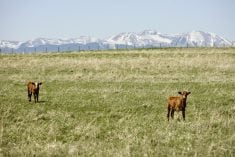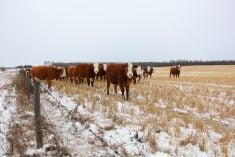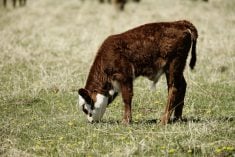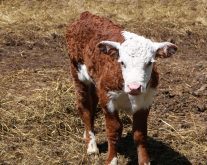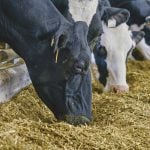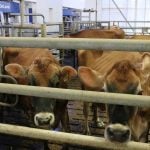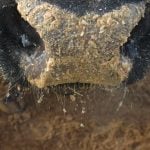Late March and early April come around for another year and on many farms in Western Canada, the chaos of calving ensues.
In the wet and slushy weather of early spring, producers often find themselves wandering in the dead of night, breath still billowing in front of them, to check on a calving cow. The next day, they might be pulling a calf, or walking thousands of steps through the puddles and mud of pastures and pens to check on all their pregnant cows. With so much work to be done, it doesn’t seem like there’s much room for anything else.
Read Also
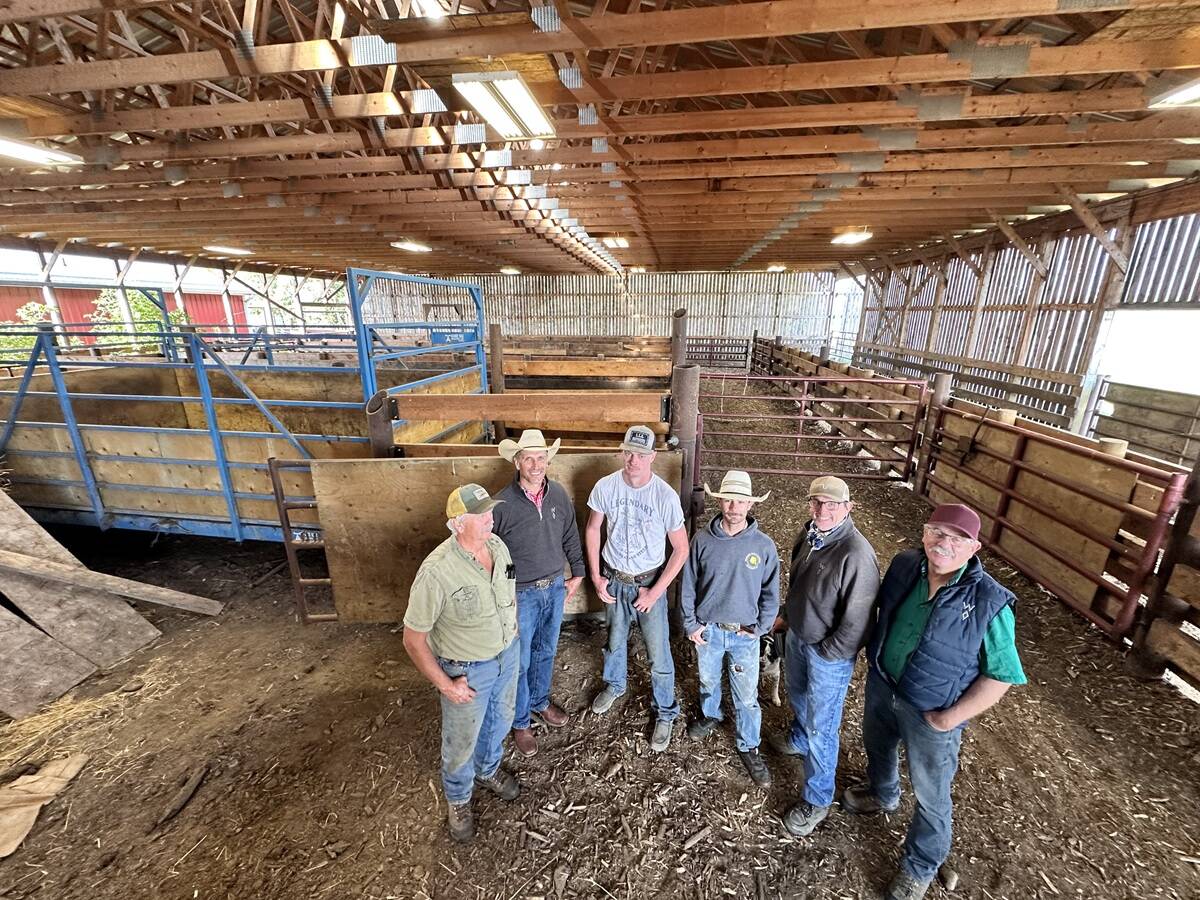
Farm families work together to graze cropland with cattle in the fall
These Alberta farm families have separate operations, but work together to manage their land
However, it’s important to remember how crucial record-keeping during calving season is — even during terrible weather or during the 2 a.m. check.
Benefits of record-keeping
Dr. Cheryl Waldner, a professor at the Western College of Veterinary Medicine, has been doing research on record-keeping during calving for around 20 years.During that time, she’s gone to many privately owned herds in Western Canada, looking into how these producers keep records on their operations.
In previous research published in 2013, Waldner and some of her colleagues from WCVM identified factors that contribute to reproductive success in over 33,000 beef cows, such as breeding management, body condition score and previous reproductive history.
“One of the biggest studies that we did was actually back a few years ago now and we used individual herd records, where it wasn’t just helping at the herd level, it was actually individual animal data on more than 30,000 animals,” Waldner says.
She says the study showed them how valuable individual animal records are — especially across multiple years.
“Having those records, especially some information at the individual animal level, really helps to take a lot of the guesswork and emotion out of the decision,” she says.
Record-keeping over the years lets producers know vital information for decision-making on their farms, such as cows that have had abortions, stillborn calves, C-sections, or hard calves to pull, which often means they will have issues in the future, as well.
[Related] Grainews: Problems and benefits of twin calves
From there, producers can a better decision when it comes to their herd management.
“Having those hard numbers … makes it much easier to be objective about making sure that those cows are culled the next fall, or using that at least as one of the major criteria when we’re sorting through our herd and trying to decide what we’re going to keep and what’s going to go.”
Getting started
There are a variety of things Waldner says producers should be looking at when keeping records of their operation, but the key is to start simple. Record-keeping can be overwhelming for producers who have never done it before. Doing too much at once can lead to failure to continue after the first year.“Start very simply the first year,” Waldner says. “Just pick out maybe two or three things that you’re going to keep track of that you will be able to use come culling time in the fall, come decision-making time, or come time to keeping your replacement heifers.”
She recommends starting with things such as the numbers of calves born, cows that calved successfully and calves lost.
From there, she recommends tracking data for each calf: sex, colour and weight. Producers can also track cow data such as whether the calf was born alive, any trouble during or after calving, as well as the cow’s temperament and mothering traits.
“Individual animal records are definitely worth their weight in gold on these operations,” Waldner says.
“There’s all sorts of little things that you might mark down there that could make a difference. That doesn’t require any fancy equipment. It just requires a pocket calving book.”
The Beef Cattle Research Council (BCRC) also recommends keeping data for benchmarking. Producers can use data such as calving rate, weaning rate and death loss as a measurement for the performance of their operation. Benchmarking allows the producer to have performance averages, which they can compare to their past and current performance, as well as to other producers in their area.
The BCRC website has three levels for producers who are just starting record-keeping on their operations. As Waldner says, this helps producers record key data without getting overwhelmed and as time progresses and they move up the levels, they can start being more thorough on the data they collect.
Although a lot of producers are moving to record-keeping on their cellphones or the computer, Waldner says it doesn’t matter where you keep your records, as long as it does the job you need it to.
“The important part is getting that information down. The next piece is using that information. The information doesn’t do you any good if you can’t use it,” Waldner says. “And the advantage of putting it into a computer is it makes it a lot easier to analyze that data to find things quickly in the data and to make those comparisons of how you are improving what’s working for you and what isn’t from one year to the next.”
U of S research
Other researchers at the University of Saskatchewan are looking into the topic of record-keeping during calving as well. Brooklyn Wong, a master’s candidate at the University of Saskatchewan, worked alongside Kathy Larson and Dr. Eric Micheels on a study regarding the value of record-keeping when it comes to making decisions on cow-calf farms and ranches.
Wong conducted interviews with producers from each province about how they keep records on their operations.
“What I learned from those interviews was used to inform a survey that was sent to ranchers across Canada,” Wong says.
The survey was administered in the spring of 2022. Wong then conducted an econometric analysis of the results they received.
From there, she looked at ranch and rancher characteristics associated with BCRC’s different levels of record-keeping, as well as the association between rancher characteristics, record-keeping levels and the rancher’s satisfaction and confidence in making decisions. Producers’ levels of satisfaction were measured in animal production, their decision-making process and their overall performance.
The study closed on April 25, 2022, after receiving 346 responses from producers. During the research, Wong says what she found most interesting was how the producers valued data and record-keeping.
“It was interesting to learn that some producers who were considered top innovative producers in their production and animal management didn’t find data-driven financial decisions to be important, as they chose to rely on off-farm jobs to pay bills,” Wong says. “As well, I enjoyed hearing how each rancher measured their success. Some had concrete numbers they wanted to improve or reach, some focused on animal production/health, others focused on cost efficiencies and some even described rating their satisfaction by how they feel when they check their herd.”
Although this research won’t be made public until Wong finishes her master’s thesis, she did have some preliminary results to share — results that resonated with what Waldner had said.
“Our preliminary results have shown that while there are not many consistent factors on what influences ranchers to keep each level of records, there is an interesting story showing how ranchers who are analytical, goal-orientated and keep records rate themselves on the scale as more confident decision-makers when making decisions regarding animal production.”
Record-keeping during calving can add a lot of extra work to an already busy time of the year, but it’s an important thing for producers to do to improve the efficiency of their farms.
“We found records allow a rancher to make evidence-based decisions, which leads to more satisfaction with production outcomes,” Wong says. “This finding will hopefully encourage ranchers to make goals for their operation and collect records to make decisions and measure progress towards those goals.”
For Waldner, she wants to keep educating producers on how beneficial record-keeping on their operation could be.
“Good records can help herd owners make their operations more efficient and more profitable. By analyzing your records you can identify successes as well as areas for improvement,” Waldner says.


